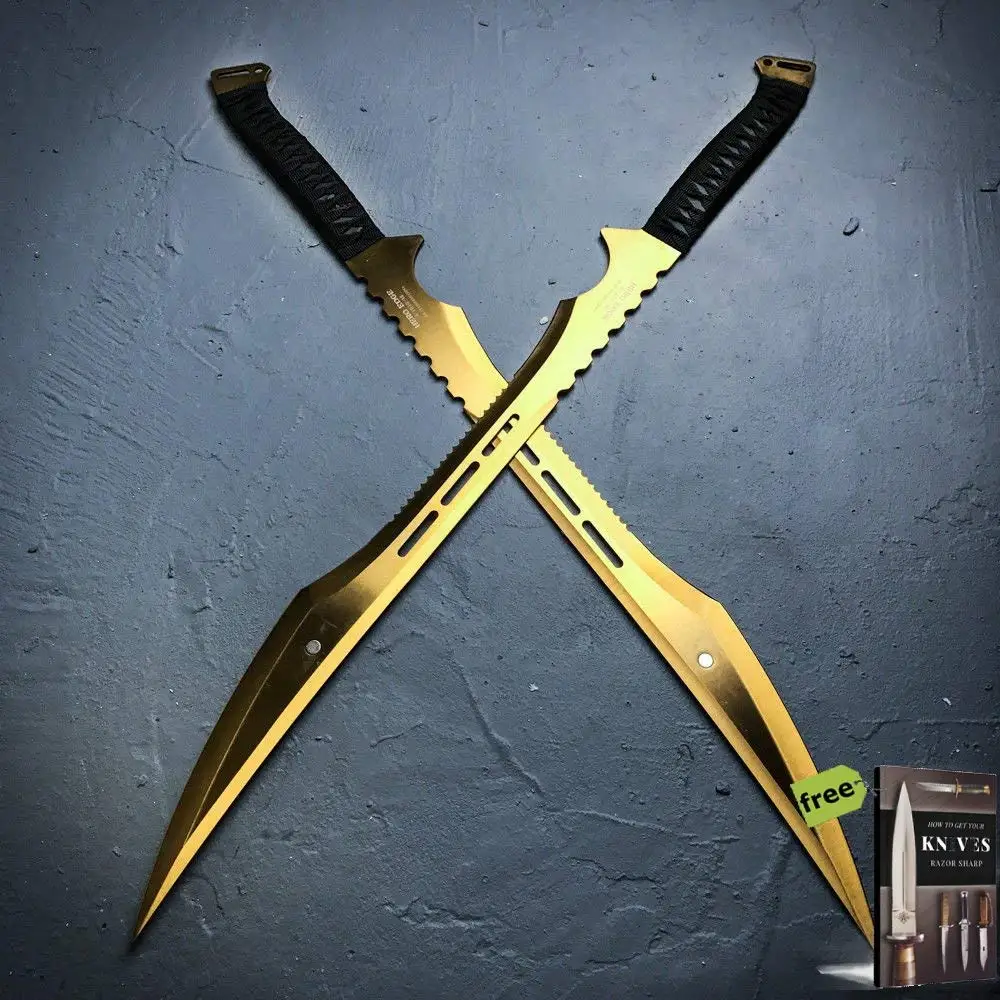
Tamiya-ryu requires large, precise movements. When you stand in the high stance, Jodan-no-kamae, your opponent will have a tendency to look at the raised sword blade, and they will not notice foot movement. A longer hilt gives the sword greater stability and power. Tamiya-ryu, founded in the late 1560s, makes use of a sword with a slightly longer hilt. You can learn Jigen-ryu in Kagoshima prefecture today. The attacker makes a running hidari-kesa cut from the opponent's left shoulder to his right hip, cutting into the base of the neck where armor would not protect easily.

Students of Jigen-ryu stand in a modified Hasso-no-kamae stance, with the sword held vertically on the right side of the face with the guard at cheek level. It emphasizes a powerful first strike, intended to kill an enemy instantly. Jigen-ryu was founded in the late sixteenth century. It contains some principles of aikido: instead of killing an enemy, the style encourages the use of disarming techniques. The katana, in keeping with most swords is just over a kilogram in weight (just over a bag of sugar) which. You will fight your way through a bunch of enemies on different locations to kill the former apprentices of your master and fix his mistakes of the past. Katana Kata - is a souls-like game, where not only your timing matters, but also directions of strikes. Shinkage-ryu emphasizes flowing, subtle movements, and uses a longer and thinner blade. Training guide to fighting with a katana. 'Kata - a way or form to memorize and improve combat moves'. Yagyu Shinkage-ryu was the first style of the Tokugawa shogunate, before they began using Ono-ha Itto-ryu. Modern kendo, the sport form of kenjutsu, derives its underlying philosophy from Itto-ryu. According to Fighting Arts, Ono-ha Itto-ryu curriculum has over 150 techniques, many of which involve a direct downward cut through the center line of the body, often using the wrists as a target during their raised position when ready to attack. Ono-ha Itto-ryu's name translates to "one sword." The underlying principles of the style, and the branches of Itto-ryu that followed it, rely on a single powerful cut to defeat the enemy. Mugai-ryu's iaijutsu curriculum incorporates two-person forms to help students achieve a sense of distance. Advanced students move on to tameshigiri exercises, which involve cutting targets to ensure proper form and blade angle during a cut. Students train with bokken-wooden swords-or iaito, aluminum training swords with a dulled edge. It has both kenjutsu and iaijutsu techniques.
#KATANA COMBAT MANUAL#
The Chicago Mugai-ryu Study Group manual explains that this style has existed since 1691. Join Facebook to connect with Katana Combat and others you may know. Katori Shinto-ryu headmasters enjoy the status of Living National Treasures of Japan. View the profiles of people named Katana Combat.

The style encompasses training in the use of the katana, the bo staff, the halberd-like naginata, the spear and in empty-hand combat through jujitsu. According to Koryu, an index of traditional Japanese martial arts, Katori Shinto-ryu dates to 1447 and has had 20 headmasters based in Japan.

Tenshin Shoden Katori Shinto-ryu remains the oldest surviving school of Japanese swordsmanship.


 0 kommentar(er)
0 kommentar(er)
